SFL 30 Review by Axel Thorenfeldt
It was almost dark when we landed in Kirkenes in northern Norway on 2nd April 2023. From there, a smaller propeller plane took us across the Varanger fjord to the city Vadsø, where Agnes and I were going to stay for some time. I had been offered the opportunity to be “artist in residence” here, painting through the entire month April, and Agnes would join for the first week. We are both master students in biology at Lund University in southern Sweden. (although my studies have been put on hold because of too much painting). We are of course also birders, and for the occasion, we were lucky and excited to try out the new ZEISS 8×30 SFL binoculars.
During my visit to Varanger last year, I spent several days in Vadsø harbour, painting the three eider species that occur there – Common, King and the magnificent Steller’s Eider. The harbour felt like a natural place to visit first on this trip. As expected, about 50 Steller’s Eiders were bobbing between the fishing vessels, along with the more-numerous Common Eiders and Long-tailed Ducks – all still in their beautiful winter plumage. Some King Eiders were also present, not as numerous as last year, but all sexes and plumages were represented.
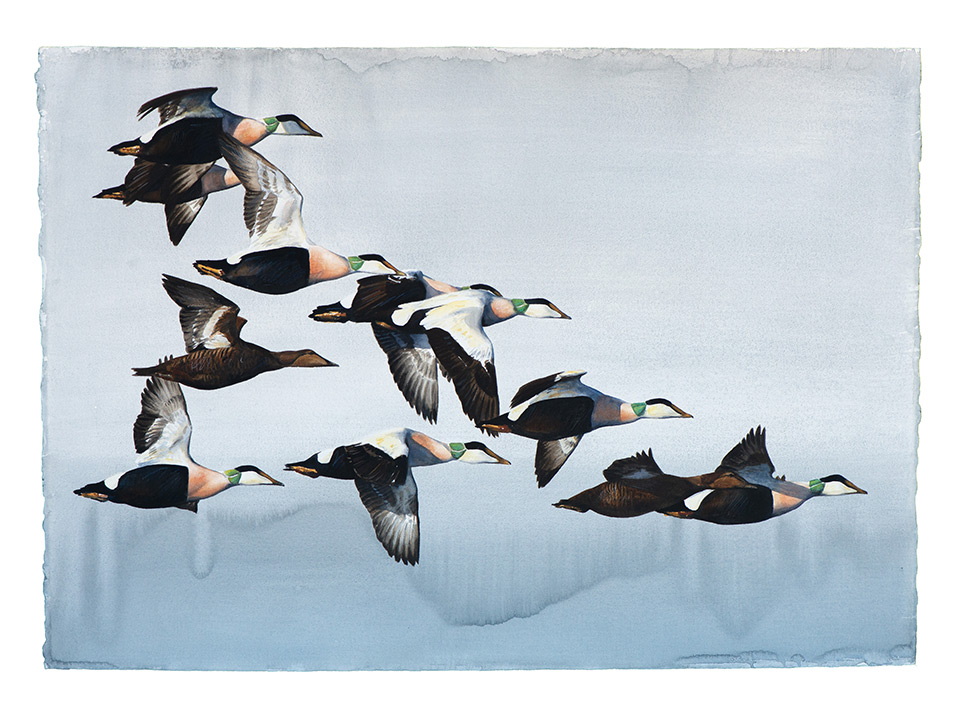
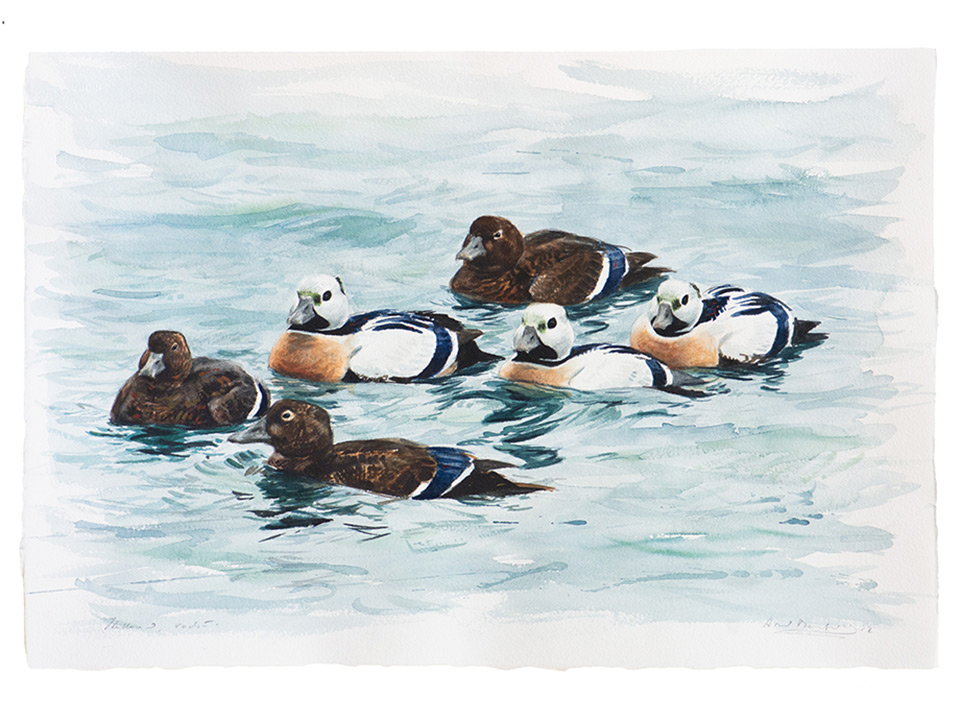
This was also my first chance to field-test the SFLs. Wow! The sharpness was incredible, and they worked perfect even in low light. The only downside was that they were so small and light, I constantly thought I had forgotten them somewhere, only to find them hanging safely around my neck – a luxury problem! For someone who usually carries a camera, a telescope and scope, as well a host of painting equipment in the field (large sheets of water colour paper, paints, brushes, and more), lightweight equipment is more than welcome. Being able to hold the binoculars still with only one hand while painting was also game changing for me.
For Agnes the small size was absolutely perfect. Using the 8x30s was a whole new birding experience and allowed her to find and focus on targets much quicker. Surprisingly, despite having much bigger hands I didn’t find any problem using the small SFLs either; not even with gloves, thanks to the large focus wheel and ergonomic design.
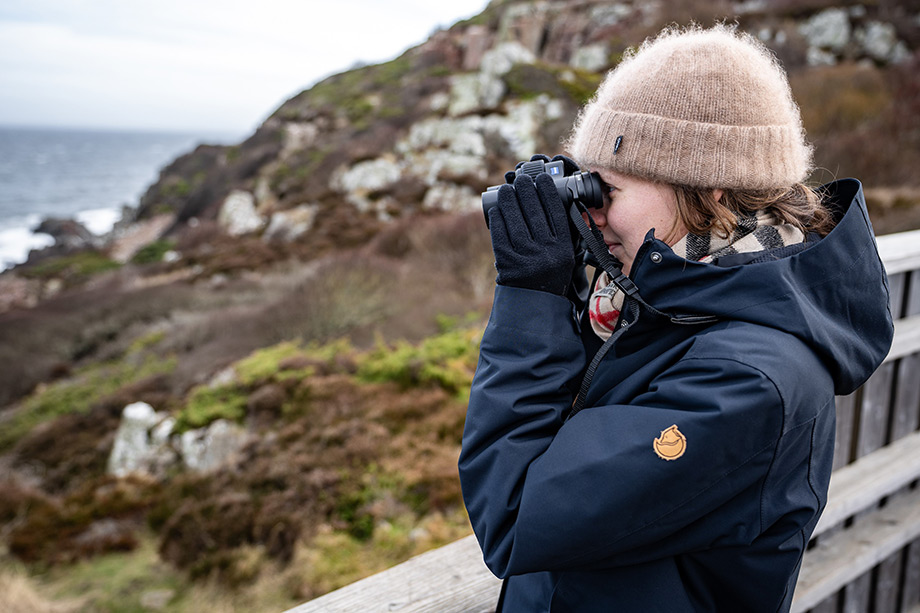
Having enjoyed the eiders and secured some field sketches, we took the road westwards. It was not as cold as last year, ‘only’ about -5 °C (23 °F), but the wind was biting and the snow blew like mist across the road. From a vantage point, we could see White tailed Eagles perched along the coast, and there were several groups of whales and dolphins far out on the fjord. On clear days, we were told, you could even see the white mountains of Russian Murmansk on the horizon. Further away than ever before.
Our end destination was Ekkerøy, a peninsula some 15-minutes’ drive from Vadsø. The old fishing community here is connected to the mainland via a narrow ridge of sand with a beautiful white beach on each side. Snow Buntings lifted from the road as we drove along the rdige. In late May, the beaches here are full of Sanderlings, Dunlins and Red Knots, but now there were only Purple Sandpipers, the hardiest of all the shorebirds. Ekkerøy slopes gently from the sea on the north side before being abruptly cut off on the south, where steep cliffs fall straight into the sea. The several kilometres of cliffs on the south side are home to a spectacular seabird colony, including thousands of pairs of Black-legged Kittiwakes. Some Razorbills, Shags and Cormorants also breed here, and Black Guillemots nest hidden under rocks and in cracks. The sound of this mass of birds was as breathtaking as the view.
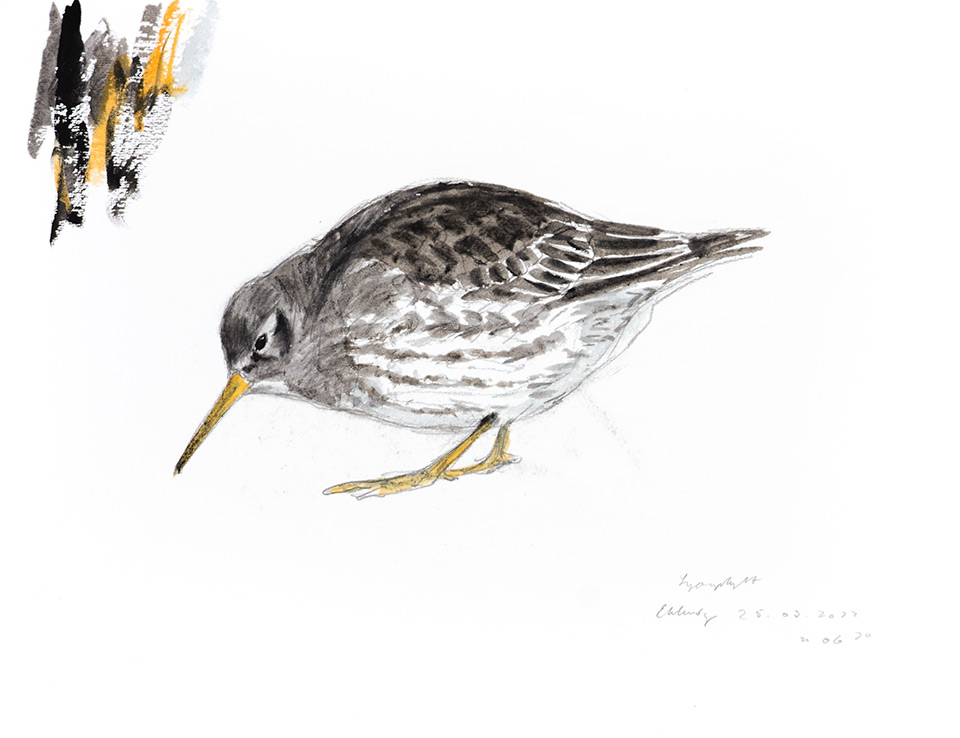
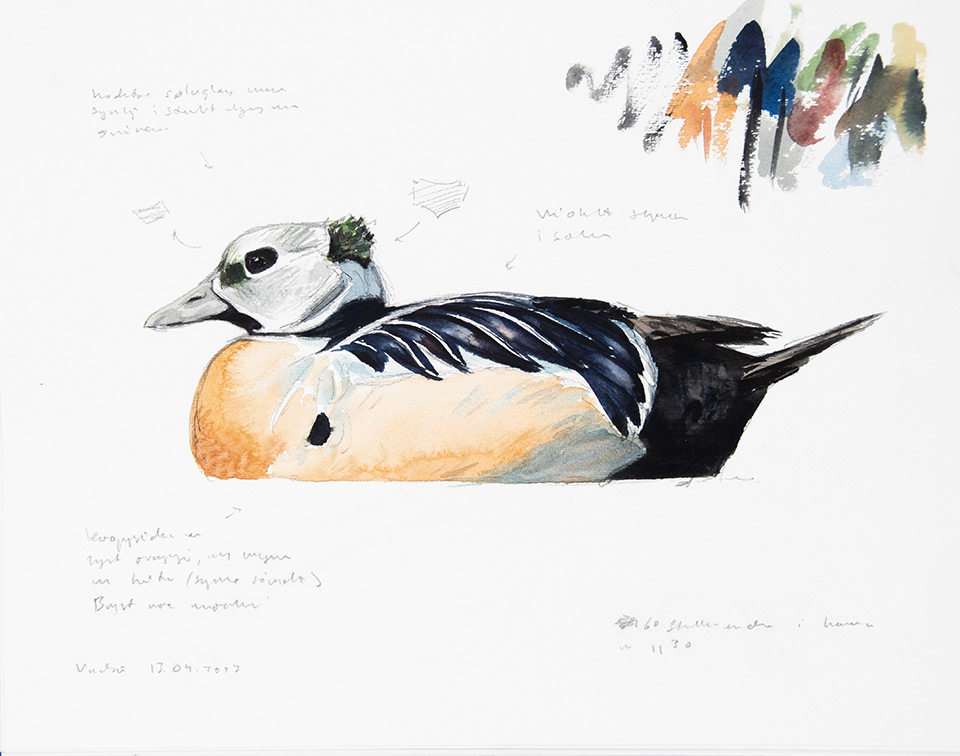
Walking under the cliffs of Ekkerøy in early spring is almost hypnotic. The Kittiwakes are everywhere, some resting on the nests, some coming in with fish, some carrying nest materials. Since you can get so close to the birds here, there is almost no need for optics, but I still like to use binoculars on close range to study details. The close-focus on the SFLs allowed me to view the birds from just a metre away. Getting this close to wild birds isn’t a normal experience where we live in southern Sweden, but we both agreed that the SFLs would work great to study other wildlife, such as insects and amphibians.
Suddenly, two Kittiwakes crashed on the ground beside us, biting and beating each other as they rolled past us down towards the water. The fight over nest sites is a natural part of spring here, it can be brutal and bloody, but usually without lasting damage.
Walking under the cliffs of Ekkerøy in early spring is almost hypnotic. The Kittiwakes are everywhere, some resting on the nests, some coming in with fish, some carrying nest materials. Since you can get so close to the birds here, there is almost no need for optics, but I still like to use binoculars on close range to study details. The close-focus on the SFLs allowed me to view the birds from just a metre away. Getting this close to wild birds isn’t a normal experience where we live in southern Sweden, but we both agreed that the SFLs would work great to study other wildlife, such as insects and amphibians.
Suddenly, two Kittiwakes crashed on the ground beside us, biting and beating each other as they rolled past us down towards the water. The fight over nest sites is a natural part of spring here, it can be brutal and bloody, but usually without lasting damage.
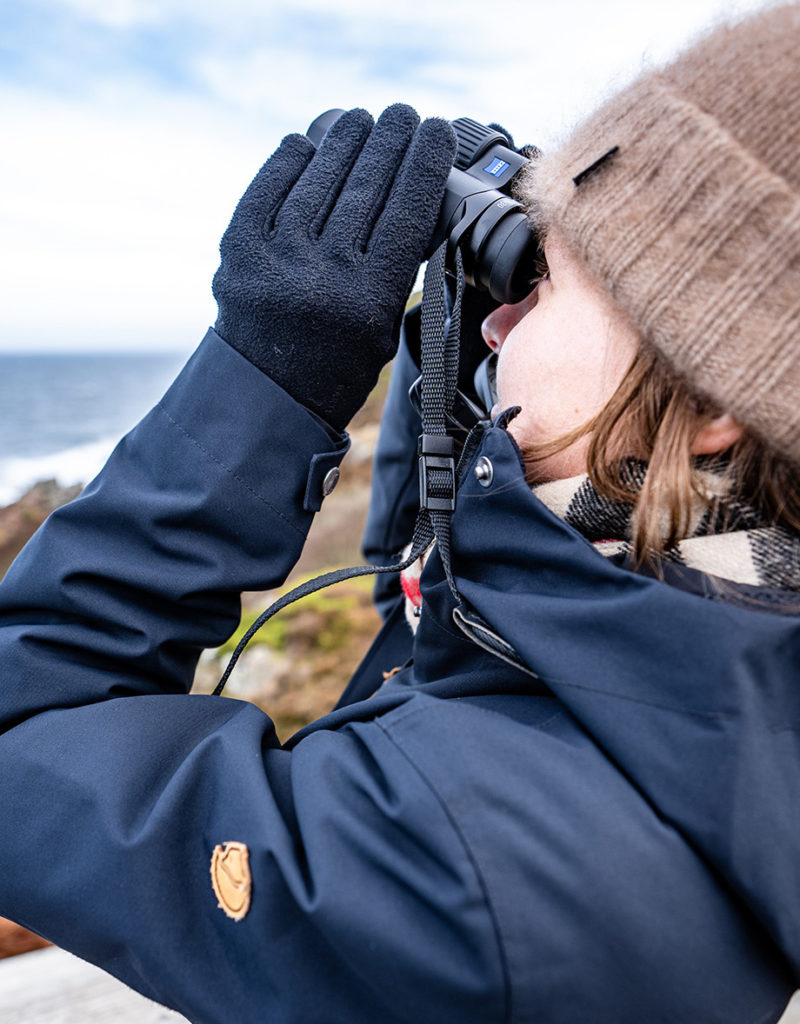
Then, chaos spread among the birds, and clouds of Kittiwakes flew off the cliffs. A White-tailed Eagle had appeared! A group of young eagles hang around the seabird colony during the summer, hoping for an easy meal. The eagle had grabbed a gull and landed on the rocks to eat. Soon, everything went back to normal and the usual hustle and bustle of the colony resumed.
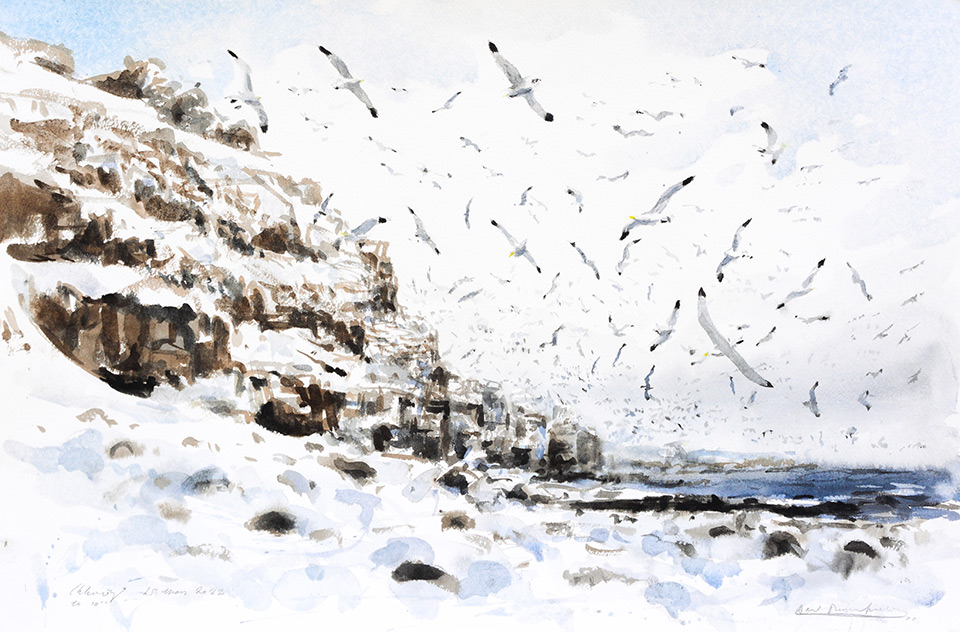
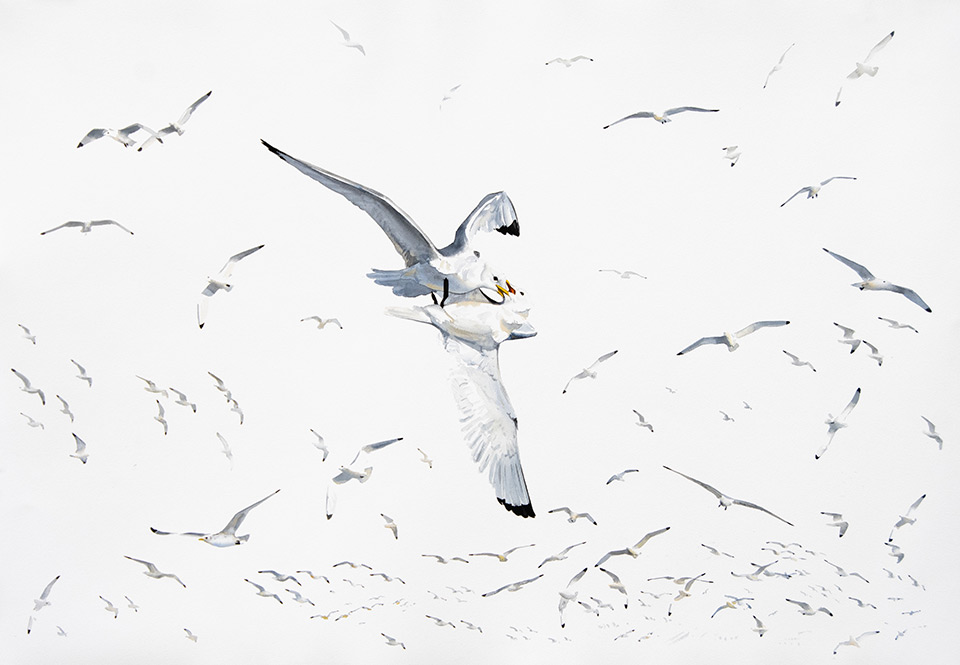
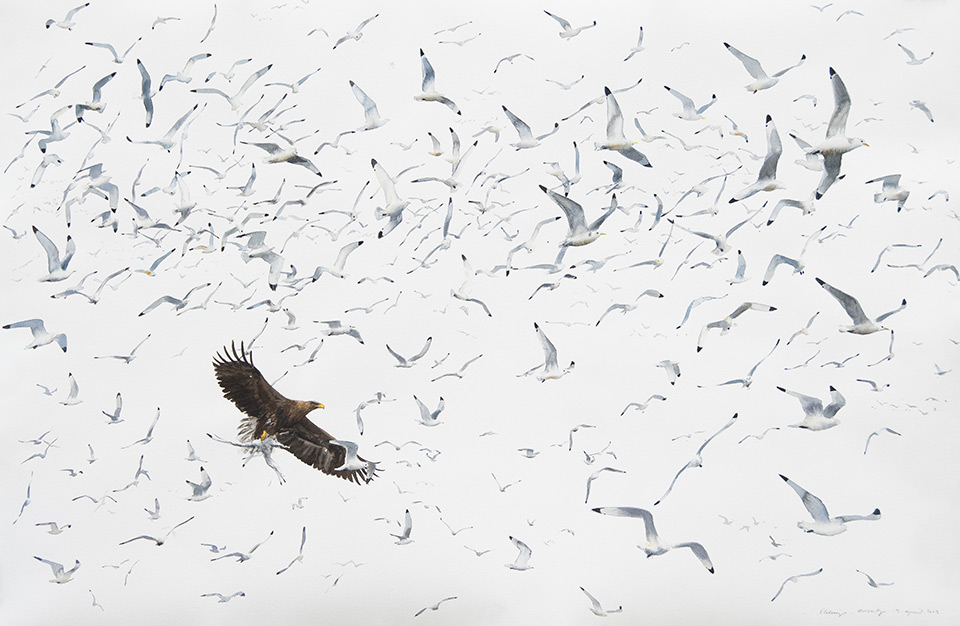
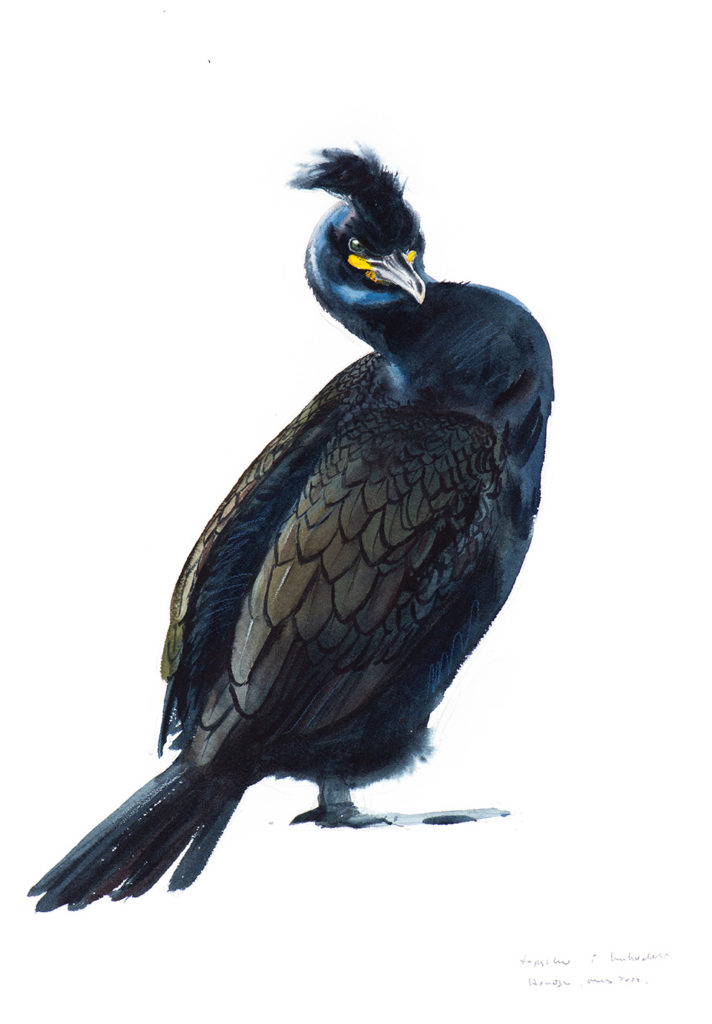
Further northwest, on the island of Hornøya, lies one of Norway’s most famous bird cliffs. If you have seen photos of Puffins fighting in the snow, they are most certainly taken here. If the weather permits, you can reach the island by boat from Vardø. Already on our way up from the boat, we were met by Shags, with green eyes and a challenging attitude. The Shags on Hornøya don’t move when you approach them, so if they block your way, you have to go somewhere else. It’s their island. I remembered from last time that we could put our bags in a small shelter on the island, but it turned out to already be occupied by Shags nesting on, in and under it. The island was packed with birds; Puffins, Razorbills, Guillemots, Brünnich’s Guillemots, Kittiwakes, gulls and Shags. I started painting, but quickly realised that protecting the watercolors from the constant rain of bird poop was pointless. Take it or leave it, painting at Hornøya is like this! Meanwhile, Agnes had found her favourites, and was sitting in the snow, watching a pair of sleeping Puffins some 1.5 meters away through the SFLs.
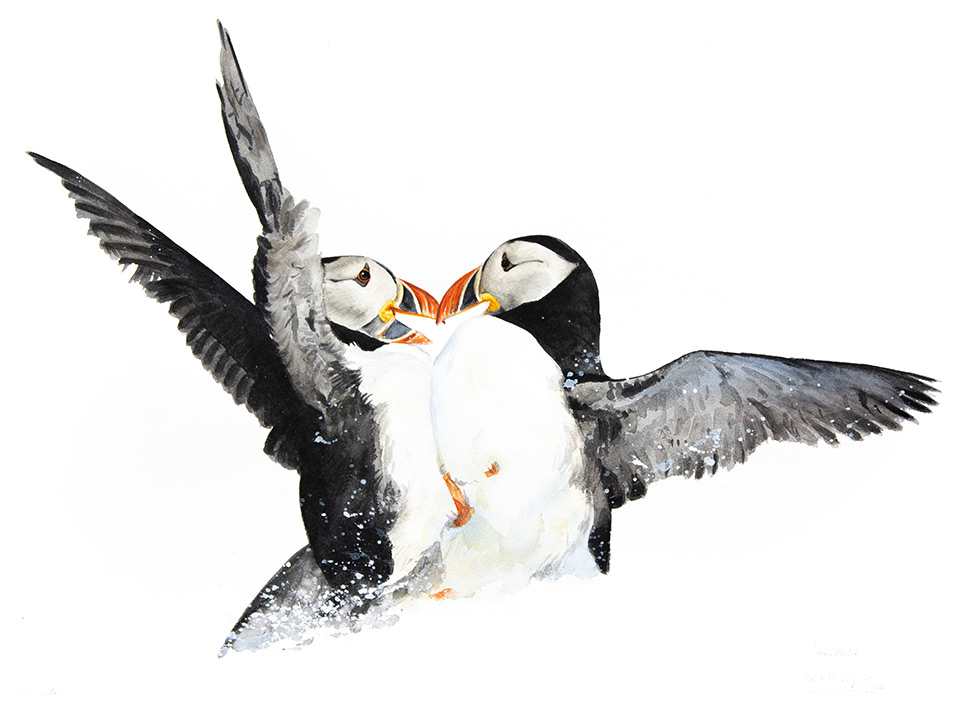
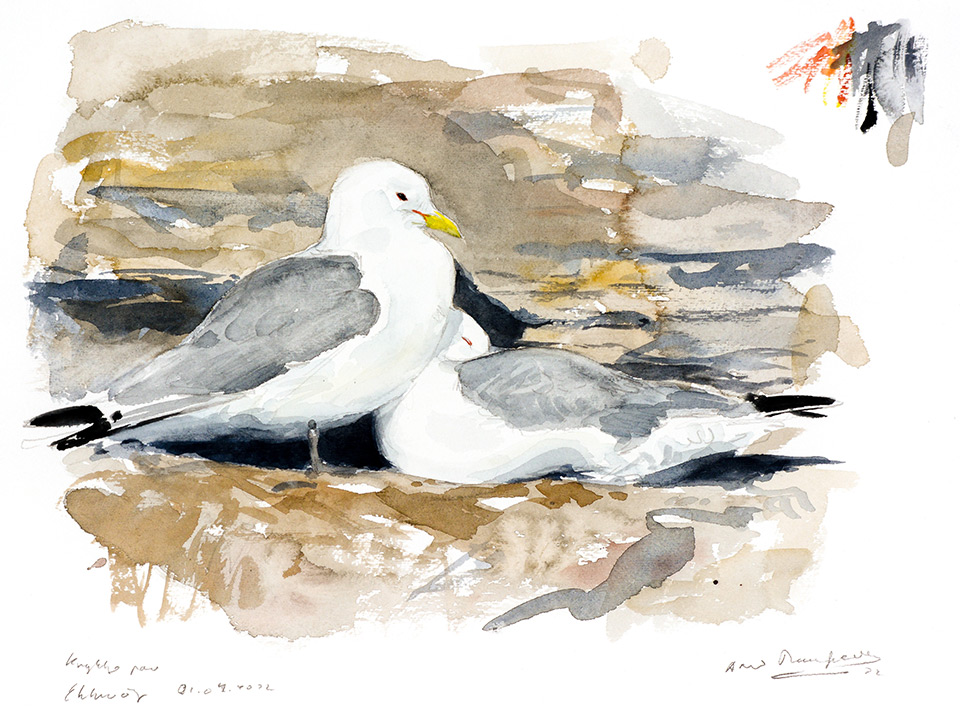
Varanger never lets you down, not the birds nor the landscapes, and our experiences were truly improved by having the ZEISS 8×30 SFLs with us. Small but still comfortable and easy to use, and sharp and bright as anything.
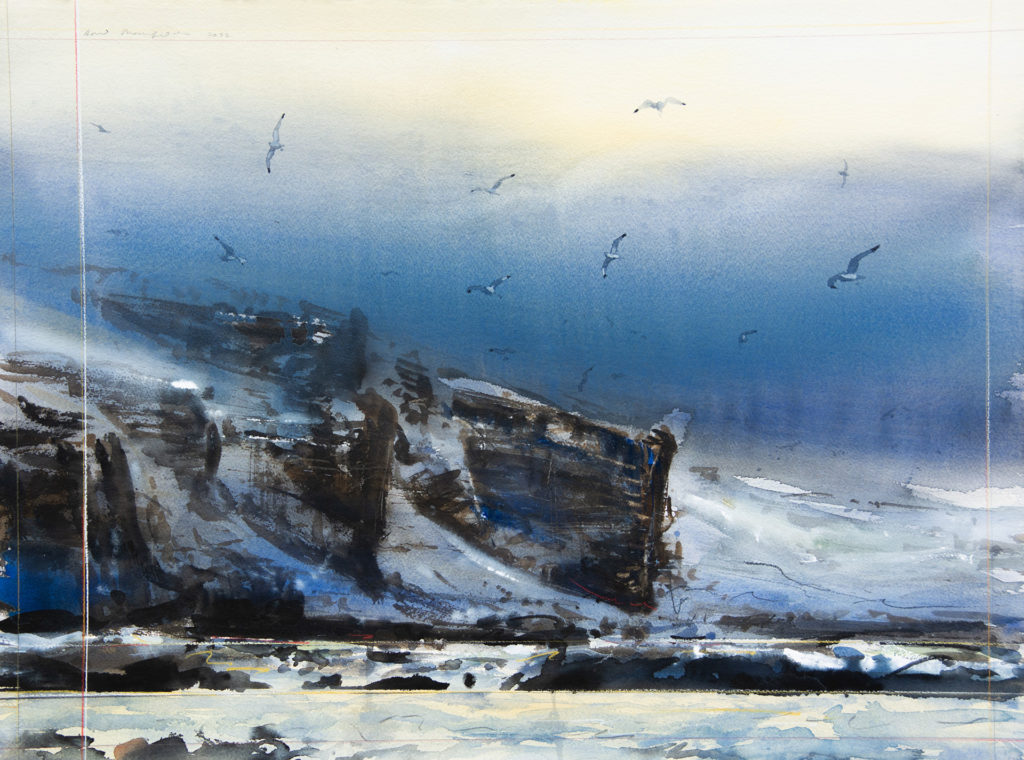
Postscript
It’s with some sadness that a postscript to our wonderful trip needs to be added. During the summer of 2023, avian influenza (bird flu) reached the seabirds cliffs of northern Norway. Kittiwakes, in particular, have been heavily hit. Time will tell how badly the population will be affected by this terrible disease. I will return again in spring 2024, this time with a degree of nervousness as to just how the seabird cliffs will be next year.